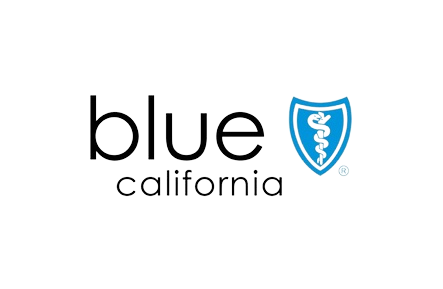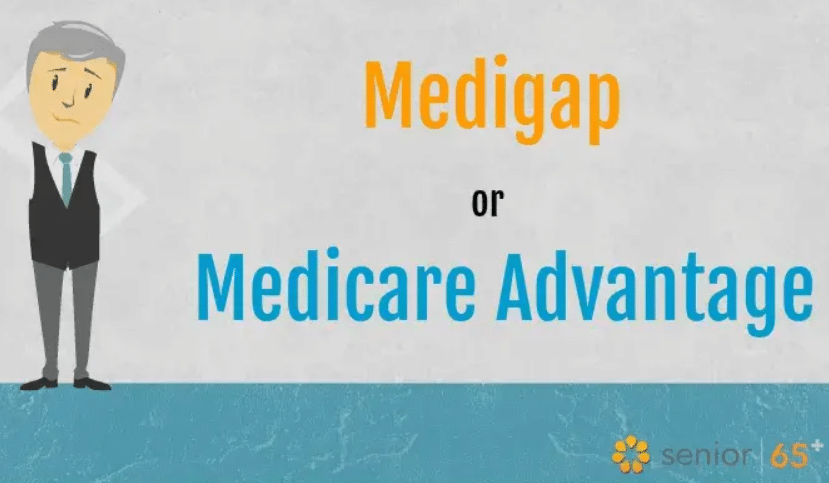When it comes to Medicare, our client’s questions sometimes seem never ending. When should I enroll? How much will I pay? Will Medicare cover everything should I get very ill?
The good news is that we, at Senior65.com, have been answering Medicare-related insurance questions since 2003, so we have a good handle on how Medicare works. We will answer the questions above and many more throughout this article. If you are new to Medicare, or just need some brushing up on how it works, this is a great place to begin.

Medicare Overview
Let’s start with the basics. Medicare is the United States federal health insurance program for Americans 65 and older, as well as people with certain disabilities or End Stage Renal Disease (ESRD).
Medicare was initially set up with two main parts: Part A is your hospital coverage, while Part B covers non-hospital medical expenses. Part A usually does not have a monthly premium, but Part B can cost $202.90 or more each month depending on your income.
Not Signed up for Medicare yet? Enroll in Medicare Part A and B at SSA.gov
Medicare Part A and Part B make up what most people call Original Medicare and they are designed to cover roughly 80% of your medical expenses up to a certain point.
That’s right, Original Medicare does not cover all your health-related costs. We will outline exactly what is not covered in detail below and how best to help pay for the expenses Medicare passes on to you.
Medicare Part A
Medicare Part A is hospitalization coverage. Its coverage kicks in anytime you are in the hospital, but also supports Skilled Nursing Facilities, Hospice Care or Home Health Services.
For most Americans, Medicare Part A will cost $0 each month. This happens if during your working years you have paid enough taxes to pre-fund part A. If you have worked and paid taxes for less than 10 years in America, you might have to pay a Part A Premium. Learn more about that here.
Medicare Part A Deductible
The Part A premium may cost you $0 each month, but there are still some expenses that you are required to pay should you not have additional supplemental insurance. The largest of which is your Part A Deductible.
This is what you are required to pay first before Medicare starts paying towards your hospital expenses. The Part A Deductible is $1,736 per benefit period. Please note that a benefit period is different than a one-time annual deductible.
The Center for Medicare Services (CMS) defines benefit period as follows: “A benefit period begins the day you’re admitted as an inpatient in a hospital. The benefit period ends when you haven’t received any inpatient hospital care for 60 days in a row. If you go into a hospital after one benefit period has ended, a new benefit period begins.”
So yes, if you end up in the hospital again after 60 days, you could be expected to pay $1,736 again. This assumes you do not have supplemental insurance to pay that deductible.
Medicare Part A costs beyond Deductible
There are additional costs beyond the Part A deductible that you are required to pay out-of-pocket. This comes as a shock to most people who assumed Medicare would cover all their health expenses.
Take a look at this bullet points below. Among other expenses, you will see that after 60 days you will start to pay some, and eventually all, of your hospital costs for extended stays.
- Hospital/Mental Inpatient Coinsurance Days 1-60: $0 after you pay the $1,736
- Hospital/Mental Inpatient Coinsurance Days 61-90: You pay $434 per day
- Hospital/Mental Inpatient Coinsurance Days 91-150 (Lifetime Reserve Days): You pay $868 per day
- Hospital/Mental Inpatient Costs after Lifetime Reserved Days: You pay 100%
- Skilled Nursing Facility (SNF) Coinsurance Days 1-20: $0 after you pay the Part A Deductible
- SNF Coinsurance Days 21-100: You pay $217
- SNF Coinsurance Day 100+: You pay 100%
As you can imagine, these costs can add up, but there is some good news. There are ways to get some or all of the cost above covered with additional insurance.
We will explain additional insurance below. Also, as long as we are covering good news, Medicare Part A covers Hospice and X at $0 after you pay the Part A deductible.
Medicare Part B
As mentioned above, Part B is your non-hospital Medical Coverage which mainly consists of doctor visits. Unlike Part A, almost everyone has to pay a monthly fee for Part B.
The current monthly premium for Part B is $202.90, but that cost can be higher depending on your income. If you have a high income, here you can learn what you might pay for Medicare Part B each month.
Part B Deductible
Part B has a much lower deductible than Part A, and you only have to pay it once a year. Medicare Part B annual deductible is $283 and you must pay this amount each year before Medicare starts paying for your non-hospital covered medical expenses.
Your Medicare Part B costs beyond Deductible
Medicare Part B usually covers 80% of your doctor visits after you satisfy the annual Part B deductible explained above. You are responsible for the 20% amount not covered.
Part B also partially covers physical, speech and occupational therapy, certain drugs administered by a doctor, second opinions, and some durable medical equipment (wheelchairs, canes, scooters, etc).
Warning: Doctors are allowed to directly charge you an additional 15% that is not covered by Medicare Part B. This is officially called Excess Charges and it’s one of Medicare’s unpleasant secrets. We will address this later and give you tips to avoid them.
Medicare Part B: the numbers
Due to recent legislation, there is no charge for preventive visits such as wellness visits under Medicare Part B and you are not required to pay your Part B deductible. Finally some good news!
- Part B Premium for most people: You pay $202.90 a month
- Yearly Deductible: You pay $283
- Most doctor services (including in-patient hospital doctor services): You pay 20% of the cost of the visit
- Excess Charges: You pay an additional 15%
- Clinical Lab Services: You pay $0
- Durable Medical Equipment: You pay 20%
- Preventive Care: You pay $0
- Part B Copayment: Depends on service
- Home Health Services: $0
One of the most important things to understand about Part B is that it is optional. You can be enrolled in Medicare Part A, but skip Part B. You may want to do this if you have your employer’s insurance through work or a spouse. Delaying Part B can save you money but can also lead to expensive penalties if you get it wrong.
When should you enroll in Medicare?
If you receive Social Security benefits before turning 65, you should be automatically enrolled in Medicare Part A and B. If you delay Social Security, you will have to enroll in coverage directly with Social security.
For most people, this should take place 6 months before you turn 65. You can enroll in Medicare here. You can also visit your local Social Security Office or call them at 1-800-772-1213.
As we stated above, some people who have work related or retirement coverage at age 65 should delay Medicare Part B. This trick can save you money and provide better options to enroll in supplemental insurance.
When will my Medicare Start?
If you want to know when your coverage will start, you can read our updated article: Medicare Part B: New Start Dates For Coverage In 2023.
Before 2023, the majority of Americans receive the red, white, and blue card about three months before their 65th birthday, and their coverage should begin on the 1st day of the month they turn 65.
We recommend that you use our Deadline Calculator to find out your exact deadlines. This will show you your custom deadlines for not only Medicare but also for Medicare Advantage, Medigap and Part D. Don’t worry, we will be introducing the three new items down below.
Medicare’s Doctor Network
Once you are enrolled in Original Medicare (Part A and Part B), you typically can receive care from any Medicare provider that accepts the “Medicare assignment.” Assignment means that the provider accepts the Medicare-approved amount as full payment for covered services.
To see if your doctor accepts Medicare payments, visit the Centers for Medicare and Medicaid Services Physician Search.
Out-of-Pocket Charges: Original Medicare’s Dark Secret
By now you have learned that Original Medicare has monthly costs and doesn’t cover 100% of your medical expenses. Many of us were led to believe that, once we hit 65, all our medical costs would be paid for, but this is not accurate.
These out-of-pocket expenses can really add up: a study by the Journal of General Internal Medicine discovered that out-of-pocket medical expenditures in the five years prior to an individual’s death totaled more than $38,000, leaving 1 in 4 seniors approaching bankruptcy. All of whom were people who had Medicare!
Medicare does not cover:
- Monthly Premiums
- Deductibles
- 20% of all your medical costs
- 15% of excess charges
- Prescription Drugs at the pharmacy
- Vision
- Dental
- Hearing
- First 3 pints of blood
- Foreign emergency healthcare
For a complete list visit our “What does Medicare NOT cover?” article.
Additional Medicare Insurance
If you are looking at this list above and wondering “how can I afford all this?”, you are not alone. Over ½ of all Americans purchase additional Medicare insurance and 90% purchase a Part D drug plan, according to the Kaiser Family Foundation.
This is where Senior65.com comes in. We are licensed independent agents who help you understand and enroll in additional Medicare insurance such as Medigap and Medicare Advantage coverage. There is no cost or hidden fee for our service.
Here is a quick review of insurance products you can purchase to address what is not covered by Original Medicare as well as the out-of-pocket expenses passed on by Medicare.
Medigap
Medigap is also referred to as Medicare Supplemental insurance and can help you cover most of what Medicare doesn’t. All of your deductibles, copays, coinsurances and that 20% we talked about earlier gets handled for you.
Medigap plans are standardized, so every plan must offer the same benefits. The main difference will be your premium, which varies from company to company. Learn more in our Medicare Supplement section.
If you choose a plan and it isn’t working for you anymore, you might have options. If you’re still within six months of your Part B effective date, you’re in your initial enrollment period, and approval is guaranteed. But, if your Medigap Open Enrollment period has passed, your best bet for switching plans is through the Birthday Rule or a similar state law. Without one, the process may involve answering health questions, and approval isn’t guaranteed. See where you stand with our AI Medigap Underwriting Checker, or reach out at 800-930-7956—we’re always happy to help for free.
Get a Medigap Quote Enroll in Medigap
Medicare Advantage
Once known as Medicare Part C, Medicare Advantage is replacement insurance offered by private companies. Basically, your Original Medicare coverage gets replaced by equal or better coverage offered by insurance providers.
Contrary to Original Medicare, Medicare Advantage is not standardized, so each plan is different.
Learn More about Medicare Advantage Get a MA Quote
Medicare Part D
You probably noticed that during this whole article, we have not discussed prescription drugs in detail. That is because Original Medicare does not cover your prescription drugs that you get at the pharmacy. Part D insurance can cover some or most of your drug cost.
💡 Note: Senior65.com does not manage Part D enrollment. You can find the full process in our step‑by‑step guide.
Dental, Vision and Hearing
These three items are also not covered by Medicare. You can learn
more about them by visiting:
Where to go next?
If you have reached the end of this article, you should be proud. You clearly have a long attention span and now you also should have a good understanding of the basics of Medicare.
If you are trying to decide where to go next, our article explaining how Medigap works may be a good choice.
If you have any questions, please contact one of our licensed agents at 800-930-7956











